The main stages of setting up a WMS
WMS software
October 10, 2024

Illustration with our WMS EGO solution
The effective implementation of a WMS follows a precise and sequenced methodology in stages, where the customer teams and those of the integrator must work hand in hand.
- What are the steps to implementing a WMS?
- What is the content of each of its stages?
- What questions should the teams answer and what information should they provide?
- What work will be carried out on the integrator side and the client side?
- How is team training approached during these stages?
Each integrator has its own implementation methodology. Here we present one of these methodologies developed by SITACI for its WMS EGO solution .
At SITACI, the implementation of the EGO WMS is thus divided into 5 key phases.
During the first phases, the SITACI project teams are particularly present to frame and organize the work. But gradually, in the downstream phases, it will be up to your project teams to take control. The STACI teams will then move from a leadership role to a support role for your teams.
In the last phase, your teams will then be almost autonomous in their action.
1- Launch phase
In addition to the aspects of framing and organizing the work, the launch phase is used to collect a wide variety of qualitative and quantitative information on the warehouse. For example:
- List of purchase or sales orders,
- Description of the interfaces that will be created between the EGO WMS and external computer systems,
- Collection of constraints linked to the customer, the product, the warehouse,
- Topographic plan and zoning of the warehouse,
- Article base (references, weight, dimensions, packaging, etc.),
- The number of operators available at reception (Full-Time Equivalent)
- The types of handling equipment (pallet truck, trolley, stacker, basket, etc.),
- Management of DLP (Expiry Date) on items or not,
- Dedicated picking areas for picking,
- Label formats used.
Beyond this collection of information, the launch phase is also the opportunity for a first contact and a discovery of the WMS EGO tool.
Indeed, we made the choice, even before the studies began, to present our WMS to our customers in a refined version (in terms of functionalities) and with a “School” dataset allowing them to start practicing.
This “concrete” contribution in the upstream phase brings awareness of the operating philosophy of the tool. This is an opportunity to understand the concepts behind it, to gradually bring future users into the “vocabulary” of the EGO WMS and to begin to open up the fields of possibilities in connection with the standard version of the WMS.
Indeed, the bias here is to say:
“If you understand very simple flows based on “School”, then it will be all the easier to understand your flows with your future data and to understand your specificities.”
2- Study phase
From this phase, individual or collective work sequences will then follow one another in a very specific order.
Their objectives will be to prepare the configuration of the EGO WMS, to create the working environments (hardware, interfaces, VPN, Wifi, etc.) and to anticipate the collection of information which will subsequently be injected into the software.
This work will, for example, make it possible to answer the following questions:
- What are the management areas of my warehouse and what are their roles?
- Are there families of articles with specific attributes requiring particular treatment?
- What are my storage and picking strategies?
- What are the main logistics processes in my warehouse (business scenarios), the rules and the main exchanges of information associated with them?
- What will be the specifications (for functional adjustments or specific IT developments) in order to meet needs not covered by the standard version of the EGO WMS?
- What will be the material requirements?
3- Pre-design phase
This phase allows you to “get into the hard stuff”.
The studies will make it possible to configure the WMS and initiate specific developments (if necessary) depending on the methodology implemented: digitalize logistics flows (simple projects) or the classic V-shaped method (complex projects).
The interfaces, with an ERP for example, are then tested (order flow, stock adjustment, item database, shipping confirmations, etc.). The same goes for connections with carrier platforms (carrier labels and EDI flows).
Finally, the equipment (PDA, labeler, weigher, Carboscan, etc.) is also connected and tested on the WMS .
Thanks to SaaS technologies, most of these operations can be carried out via a VPN connected to a “Virtual Machine” located at a host .
During this phase, the client is also called upon to provide all the necessary data which will be injected into the WMS.
This work should not be neglected as the quality of the data is essential for the proper functioning of the WMS . Indeed, mistakes will not be forgiven in the world of Supply Chain Execution (SCE).
The data to be provided obviously concerns the articles and the addresses of the locations (for slotting operations), but also data on:
- The shuttles,
- The types of containers and packaging used,
- The alveoli,
- Hazardous materials,
- Users,
- Barcode formats,
- Customers,
- Carriers and associated services,
- Customs tariffs
- …
So much information to be provided depending on the complexity of the flows implemented .
The objective is then to provide a working environment allowing future users to have a WMS in the company's colors (with associated equipment) in order to practice the solution.
4- Solution practice phase
This phase will make it possible to review all the scenarios (or business cases) and to involve its teams , to practice all the scenarios and take the opportunity to draft the operating procedures.
First, the project team will be able to train in the use of the EGO WMS in its near-final environment (their items, their customers, their locations, etc.) over a complete flow (input, internal, output) and for clients (or depositors) representative of the activity. The training modules on the EGO WMS are adapted to the business scenarios implemented in the warehouse.
Then, these training sequences will allow the project team to independently practice the solution following a “Solution Practice Plan”, while relying on recipe books provided by SITACI. This involves practicing all (other) logistical flow scenarios that may arise and for which the EGO WMS has been configured.
It is also an opportunity for key users to practice and write operating procedures.
These sequences are generally very rhythmic, and mobilize the teams over relatively long periods of time. A precise schedule of work is placed in everyone's diaries, taking care not to disrupt other activities in the warehouse. This investment remains essential and necessary to ensure that everything will work on the big day!
Just after the training and practicing the solution independently, we finally offer a day of “dry tests” so that the project team realizes what can happen on a typical day with the EGO WMS. It is an opportunity for them to benefit from the benefits but also to become aware of the rigor that will have to be demonstrated in the use of such a tool.
5- Deployment and startup phase
Here we are focusing on 3 subjects that we believe are important to address in order to successfully start the WMS in good conditions and to put all the chances on its side.
Stocks
The recovery of stocks in the WMS should not be neglected and may prove to be a project within a project.
The objective is to organize inventory control work to have the best possible stock management (reliable quantities at the location address). However, you should not inventory everything at the last moment.
A gradual increase in the reliability of stock keeping is to be planned:
- Create new addresses and drop off merchandise there,
- Check the quantity at the address.
To do this, here are some keys and tips for organizing this often long, tedious and strategic work for a successful start:
- Have an approach per customer (or depositor): is the decision taken a priori to switch all customers on the D-day of start-up to operating with a WMS (“big bang effect”) or can the migration of stocks be staggered? ? The answer to this question will determine the effort required to update stocks at the address.
- Think about inventory registration and storage method (automatic addressing). Are they deeply revised? If so, stock control will then necessarily be linked to the work of (re)labeling stock locations (requiring a sufficiently stabilized pre-designed address file).
- Prioritize the work taking into account the level of consumption of the items : start with items that do not rotate much, then take past consumption level readings to identify them. Finally, save the reception, shipping and sampling areas for last.
Warehouse labeling
With the arrival of new equipment, labeling and identification work will concern the entire warehouse:
- Labeling of materials with a fixed bar code: shuttles, trolleys, boxes, printers,
- Labeling of all products also with a fixed bar code depending on the packaging managed (container or packaging): pallets, PCB, SPCB, details,
- Address labeling of each location In:
- reception areas,
- quality areas,
- manufacturing or kit production areas,
- the reserve zones (mass and rack),
- picking areas,
- dock areas,
- dispute areas or return areas for re-preparation,
- Etc.
The involvement of all stakeholders
Once the production environment is configured and operational, the deployment phase will also consist of integrating the “import files” into the EGO WMS with the database that will be used on the big day .
Ideally, these files must be validated by the Keys Users (in particular the stock file with the quantities of up-to-date items at each location).
The training of end users (“End Users”) by the Key Users can then start with the operating methods developed in the previous phase.
This is also an opportunity to finalize the development of “posters” to be placed on workstations (reception, quality, customer returns, packing, shipping, etc.) containing a simplified and operational version of the operating procedures.
A few days before the start-up, it is important to communicate to all stakeholders (customers – depositors, suppliers, staff, etc.) the date and time of the start-up.
Two important tools are generally developed to secure the period between D-3 and D-Day:
- A schedule for the presence of Key Users in each area with operators,
- A checklist of checkpoints and Go/No Go.
Conclusion
One of the successes of implementing a WMS lies both in respecting the milestones proposed by the integrator, as well as in the scrupulous implementation of the contents of each of these phases. To these 2 conditions are also added the quality and fluidity of the relationships that each of the stakeholders will be able to establish in the conduct of such a project.
Most read articles
WMS software
Logistics
Supply Chain
March 25, 2025
Kpilote: ETL that connects your CMS to WMS Ego
E-commerce logistics connector, Kpilote facilitates data exchange between e-commerce platforms and business software like WMS. Associated with the WMS Ego solution, this ETL guarantees time saving, a reduction in errors and a better customer experience.
WMS software
Logistics
Supply Chain
June 10, 2024
Warehouse management: why use a WMS?
The use of WMS software is today essential to optimize and manage physical flows and stocks in a logistics warehouse. Each warehouse WMS software integration project is unique and requires in-depth reflection as well as the publication of specifications. Your logistics solution must allow you to have an overall view of your activity and its areas for improvement.
WMS software
Logistics
Supply Chain
October 4, 2024
What is a Warehouse Management System (WMS)?
In today's complex world of logistics, a WMS is key to optimizing warehouse operations, improving efficiency and reducing costs. With its advanced features, it helps meet logistics requirements by offering an efficient solution for managing the movement and storage of products within warehouses.

















